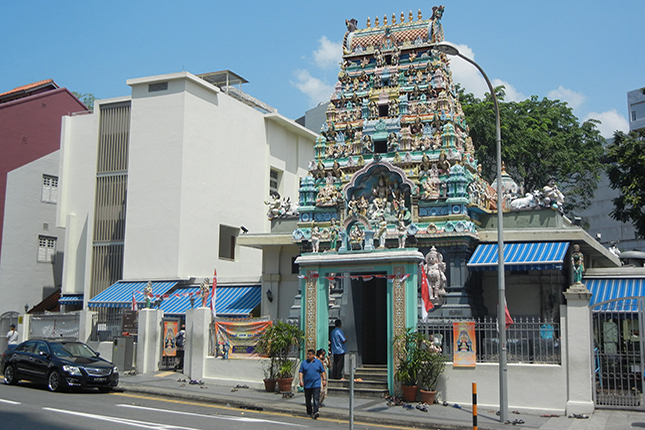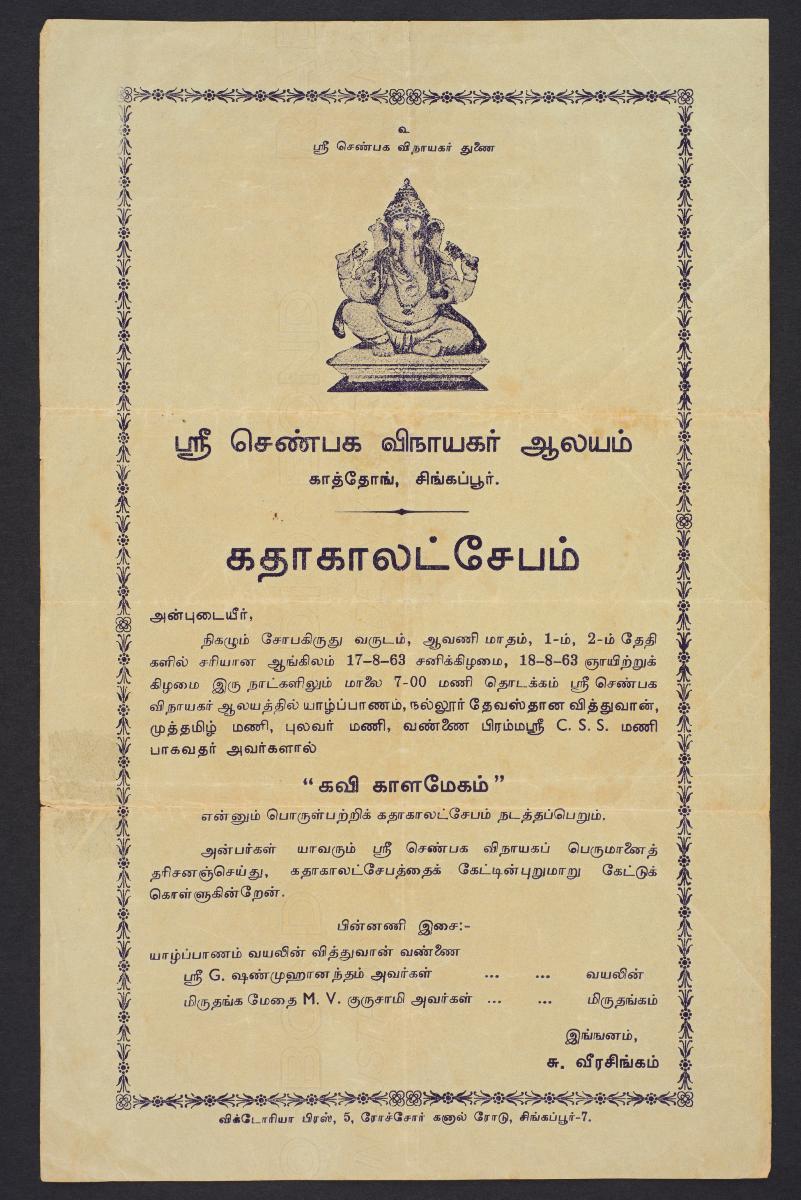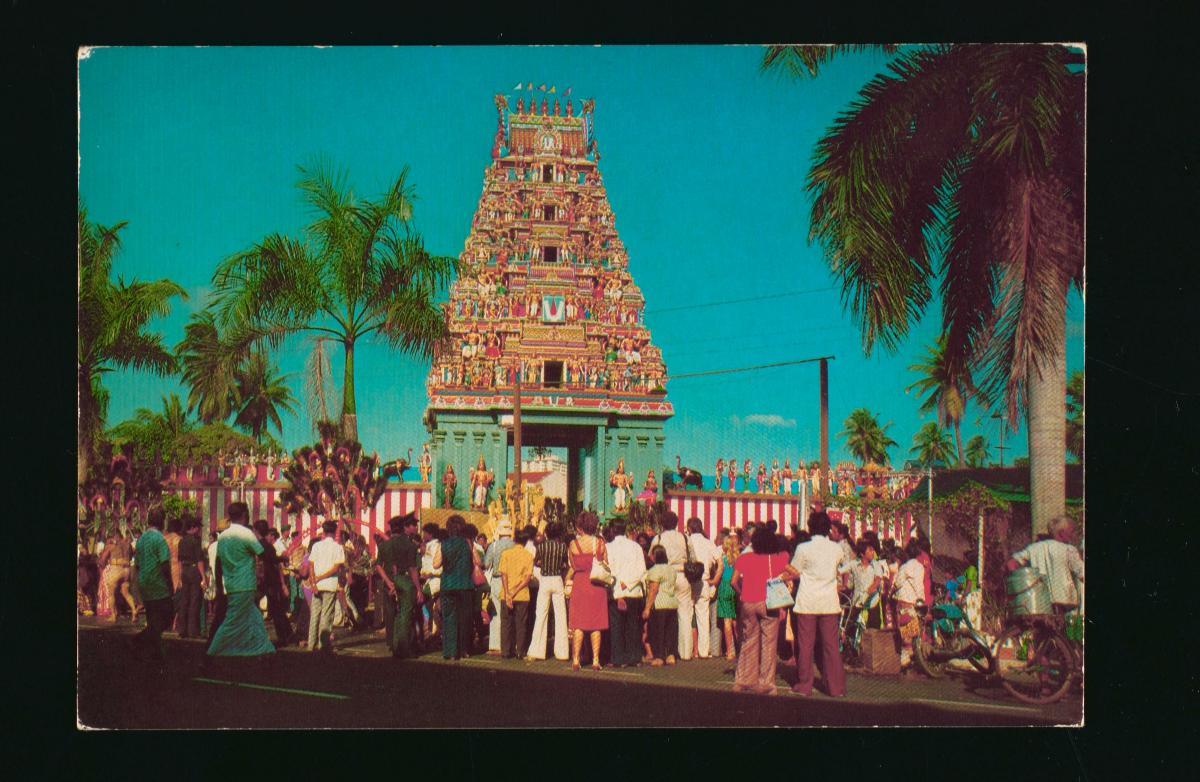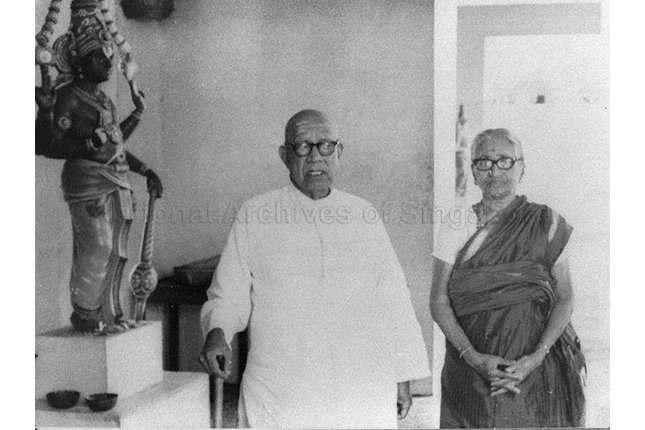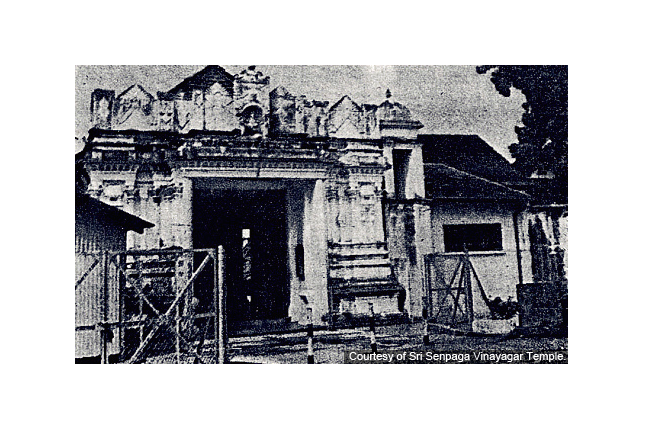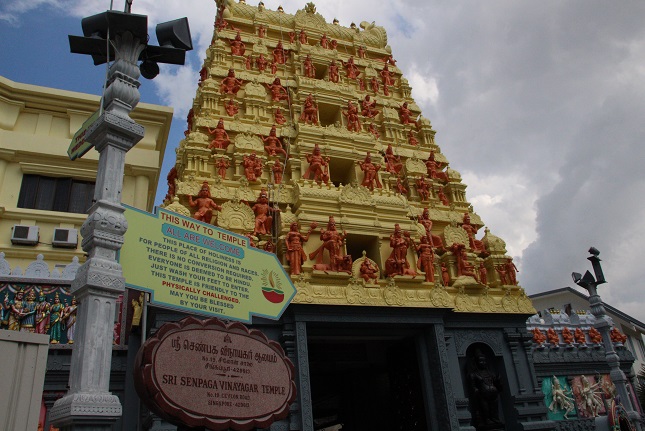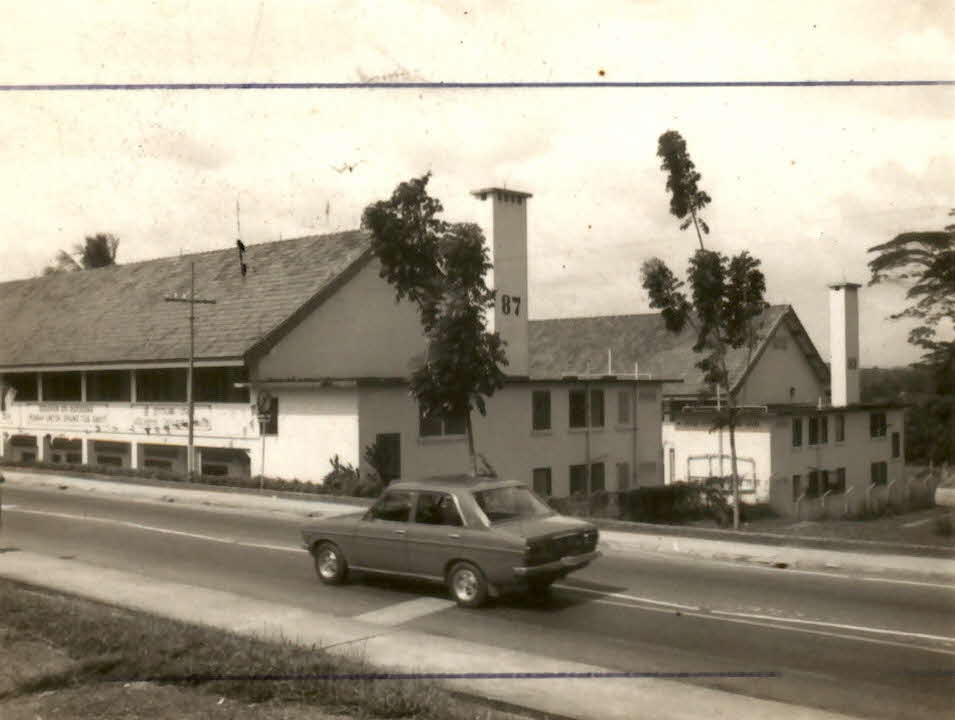With its humble beginnings near the mortuary of Singapore General Hospital, this Hindu Temple was often frequented by hospital and prison staff working near Outram Road. Under the Atthapu roof made of metal sheets, worshippers could pay their respects to the statues of Lord Vinayagar (also known as the elephant-headed god, Ganesha) and Naagar (snake god).
In 1920, the government acquired the land from the temple and used it to expand the hospital. With the given compensation, the Nattukottai Chettiars—noted money lenders from Tamil Nadu and managers of the temple, built a new and much grander temple at the junction of Keong Saik Road and Kreta Ayer Road in 1925. They named it after its former location at the Sepoy Line (army quarters).
The Vinayagar statue from the first temple site was installed in the new temple’s sanctum, in front of the main black-stoned Vinayagar deity statue. A third Vinayagar deity statue was installed in the temple when Mr. Pichappa Chettiar, a renowned trustee of Sri Thandayuthapani Temple, donated his deity statue to Sri Layan Sithi Vinayagar Temple.
In accordance with Hinduism, polytheism features heavily in the religious rites and practices of Sri Layan Sithi Vinayagar Temple. Alongside the Vinayagar statues, the site features three other Hindu idols: the Naagar, the Holy Spear and the Rama Naamam.
Every year on Thaipusam, the Holy Spear is brought to Thandayuthapani Temple in a silver chariot, where it is doused in milk as an offering to Vinayagar’s brother, Lord Murugan.
This temple provides a glimpse of the history of Chettiars and Hinduism in Singapore.
Buildings and sites featured on Roots.SG are part of our efforts to raise awareness of our heritage; a listing on Roots.SG does not imply any form of preservation or conservation status, unless it is mentioned in the article. The information in this article is valid as of September 2019 and is not intended to be an exhaustive history of the site/building.




